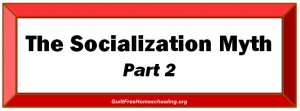Do you remember when you were teaching little Johnny how to walk? He would grip your hands with all his might, rock and teeter on his shaky legs, and wobble forward with one reluctant foot while the other remained behind, planted firmly but not really lending support to the Herculean effort being attempted. Eventually, those little feet learned which direction they were supposed to point, the leg muscles strengthened and coordinated their actions, resulting in step after step after step. Still a few attempts failed, bringing the whole body down with a jarring thud, only to be met with the determination and concentrated effort that propelled little Johnny once again to his feet and across the room to your waiting arms. You scooped him up in a giant bear hug, smothered him with kisses, and squealed with delight, “You DID it! You walked to Mommy! I KNEW you could do it!”
Now apply that picture to the latest lesson you are trying to teach homeschooler Johnny. Assure him that you know he can do this. Hold him tight until he gains his footing — do not let go too soon. Expect a few failures along the way, but do not take them to mean all is lost. Help him back up, dust him off, point him in the right direction, and allow him to try again — even if it means he might fall again. Not one of us here today is walking on our own without countless falls in our past. Success has been simplified to “getting back up,” and so it is with homeschooling. We will all fall. Those of us who have succeeded have simply refused to stay down.





 Guilt-Free Homeschooling is the creation of Carolyn Morrison and her daughter, Jennifer Leonhard. After serious disappointments with public school, Carolyn spent the next 11 years homeschooling her two children, from elementary to high school graduation and college admission. Refusing to force new homeschooling families to re-invent the wheel, Carolyn and Jennifer now share their encouragement, support, tips, and tricks, filling their blog with "all the answers we were looking for as a new-to-homeschooling family" and making this website a valuable resource for parents, not just a daily journal. Guilt-Free Homeschooling -- Equipping Parents for Homeschooling Success!
Guilt-Free Homeschooling is the creation of Carolyn Morrison and her daughter, Jennifer Leonhard. After serious disappointments with public school, Carolyn spent the next 11 years homeschooling her two children, from elementary to high school graduation and college admission. Refusing to force new homeschooling families to re-invent the wheel, Carolyn and Jennifer now share their encouragement, support, tips, and tricks, filling their blog with "all the answers we were looking for as a new-to-homeschooling family" and making this website a valuable resource for parents, not just a daily journal. Guilt-Free Homeschooling -- Equipping Parents for Homeschooling Success!

Recent Comments